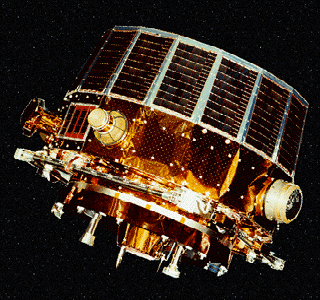Equator-S
Type
Launch
Target
Objective
Equator-S was a low-cost mission designed to study Earth’s magnetic environment, the magnetosphere, above the equator. This unique orbit took Equator-S through both the day and night sides of the magnetosphere, giving us a new perspective on the behavior of particles, electric currents, and magnetic fields at the boundary between near-Earth and interplanetary space. This complex system is influenced by changes in the space environment near Earth, often precipitated by a change in the sun’s constant outflow of material, the solar wind, or the arrival of a hot, dense cloud of solar material known as a coronal mass ejection. Because of its high spin rate and equatorial orbit, Equator-S gave us unique observations of processes that influence the flow of energy, mass, and momentum in and out of Earth’s magnetosphere.




























